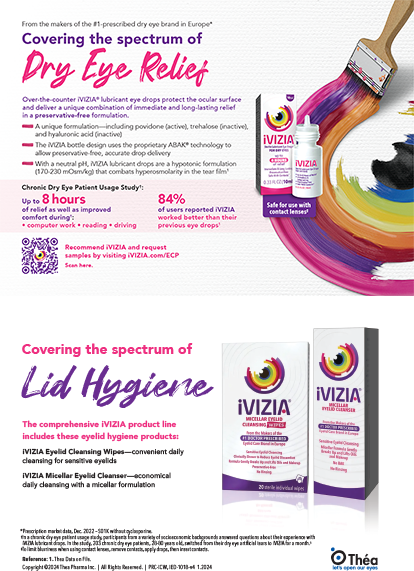The controversial question of whether to routinely employ intracameral antibiotics following cataract surgery is now more prominent than ever. The ESCRS study's results1 emerged amid a growing recognition of the increasing incidence of endophthalmitis that has mirrored the rising popularity of clear corneal incisions. As a result, cataract surgeons are now wondering what to do.
At the annual meeting of the ASCRS this month, I will report the results of a January 2007 membership survey conducted by the ASCRS Cataract Clinical Committee on endophthalmitis prophylactic practices. Sixteen percent of members were already injecting intracameral antibiotics prior to the ESCRS study's preliminary report. Of those who were not, only 9 had changed or were planning to transition to using intracameral antibiotics on the basis of the study. Forty-seven percent of all respondents, however, would use a commercially prepared intracameral agent if available, and an additional 35 would consider using it depending on its cost.
Given the absence of other prospective randomized studies large enough to reach statistical significance, why is there so much controversy following the landmark ESCRS endophthalmitis trial? A good analogy would be our indecision over what anti-inflammatory regimen to prescribe postoperatively. No one doubts the anti-inflammatory efficacy of topical prednisolone acetate, which was our gold standard long before the introduction of topical NSAIDs. In the absence of a controlled study showing efficacy for postoperative inflammation, however, using prednisolone acetate after cataract surgery is actually an off-label indication. When topical NSAIDs were developed, the FDA required placebo-controlled randomized studies to approve their labeling as postoperative anti-inflammatory drugs. A number of topical NSAIDs became commercially available because of FDA clinical trials demonstrating their superiority over placebo for reducing postoperative inflammation. These FDA trials did not tell us, however, whether routinely combining topical steroids and NSAIDs is beneficial or necessary postoperatively. Subsequent randomized head-to-head studies were needed to answer this question, and we now know that combination therapy reduces the incidence of subclinical macular edema compared with using a steroid alone.2
The ESCRS study was analogous to an FDA trial showing that intracameral cefuroxime reduced the rate of endophthalmitis compared with no antibiotic at the end of surgery. Like the FDA studies of topical NSAIDs, however, the ESCRS study did not address whether the intracameral antibiotic provided an additional benefit if combined with the most popular regimen for endophthalmitis prophylaxis?namely, topical fourth-generation fluoroquinolones started 1 to 3 days preoperatively and administered immediately postoperatively. As with topical steroids, this use of fluoroquinolones is a widely accepted but off-label perioperative regimen. Our decision is further complicated by the absence of an approved antibiotic preparation for intracameral injection. The question of whether we need to combine topical antibiotics and off-label "homemade" intracameral antibiotics will be debated for a long time. In the meantime, we can hope that industry and the FDA will heed cataract surgeons' strong desire to have a commercially available intracameral antibiotic.
This special issue of Cataract & Refractive Surgery Today explores many aspects of the controversial question of antibiotic prophylaxis. The lack of definitive studies forces us to exercise our best judgment based upon scientific principles and clinical experience. Finally, the issue highlights a major bombshell: emerging bacterial resistance to fourth-generation fluoroquinolones, as discussed by David Hwang, MD. If this trend continues to accelerate, we may indeed need a belt-and-suspenders approach to endophthalmitis prophylaxis.


